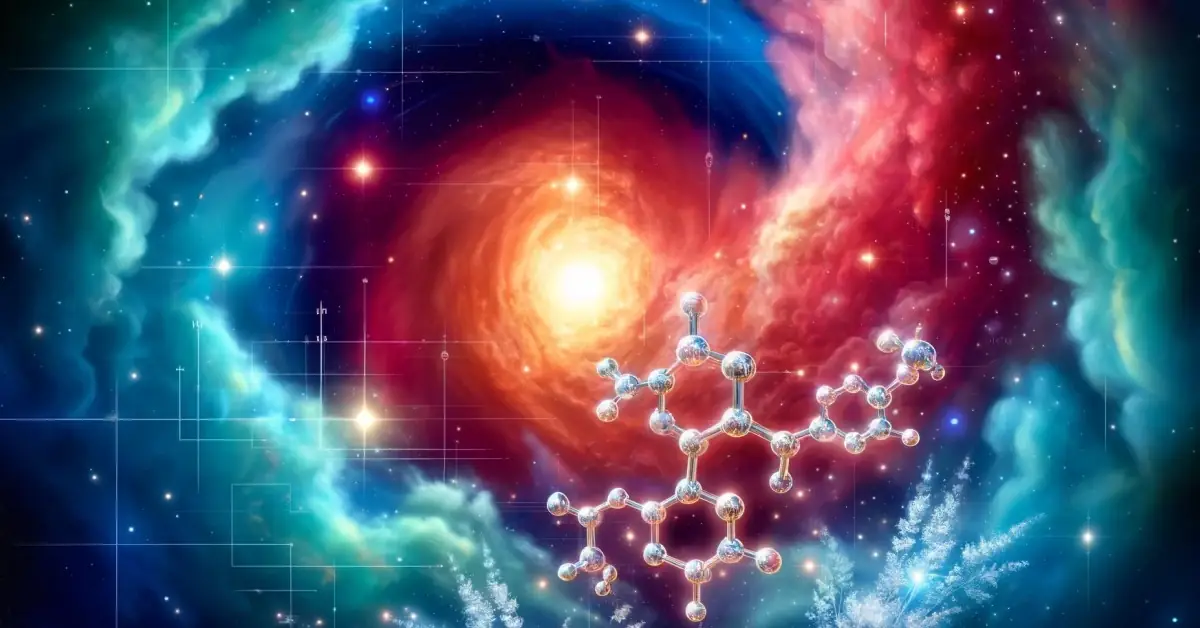New molecule detected in space using machine learning and ALMA observatory

Image credit: TW
MIT researchers have recently reported the detection of 2-methoxyethanol, a previously unknown molecule, in space. The study utilized machine learning and ALMA observations to find this complex molecule in the star-forming region NGC 6334I. The discovery enhances the understanding of molecular complexity during star formation, providing new insights into the chemical processes that occur in space.
Researchers at MIT have detected a previously unknown molecule, 2-methoxyethanol, in space. This discovery was published on April 12 in The Astrophysical Journal Letters.
The study, led by graduate student Zachary T.P. Fried, was part of a project overseen by MIT Professor Brett McGuire. This finding enhances the understanding of molecular complexity in space during the formation of stars and planetary systems.
The team utilized machine learning to identify potential target molecules. In 2023, one model suggested targeting 2-methoxyethanol.
This molecule, a member of the ‘methoxy’ family, is the largest and most complex detected in space so far. Prior to its detection, the researchers measured and analyzed its rotational spectrum on Earth with experiments conducted at the University of Lille, New College of Florida, and MIT. The spectrum covered a range of frequencies from 8 to 500 gigahertz.
The data from these measurements allowed the team to search for 2-methoxyethanol in space using the Atacama Large Millimeter/submillimeter Array (ALMA).
Observations were directed towards two star-forming regions: NGC 6334I and IRAS 16293-2422B. Analysis by the McGuire group, in collaboration with researchers from the National Radio Astronomy Observatory and the University of Copenhagen, led to the detection of 25 rotational lines of 2-methoxyethanol in NGC 6334I. This confirmed the presence of the molecule and enabled the derivation of its physical parameters, such as abundance and excitation temperature.
The detection of 2-methoxyethanol, which contains 13 atoms, is notable for its size and complexity in interstellar space. As of 2021, only six molecules larger than 13 atoms had been detected outside the solar system, many by McGuire’s group. Most of these molecules exist as ringed structures.
Continued observations of large molecules and analyses of their abundances are essential for understanding how efficiently such molecules form and the specific reactions involved. The absence of 2-methoxyethanol in IRAS 16293-2422B, contrasting with its presence in NGC 6334I, provides insights into how varying physical conditions can influence interstellar chemistry.
References:
1 Researchers detect a new molecule in space – MIT Chemistry – April 22, 2024
2 Rotational Spectrum and First Interstellar Detection of 2-methoxyethanol Using ALMA Observations of NGC 6334I – Zachary T. P. Fried et al- 2024 – ApJL 965 L23 – DOI 10.3847/2041-8213/ad37ff
The Watchers team and our contributors bring the latest on extreme weather, earthquakes, volcanic eruptions, space weather, and all things science. We're all about making sense of the natural world and keeping you informed on what’s happening. Got a tip or a question? Hit us up using the form at newstips!

This reminds me of how self-preserving natural intelligence calls planets and stars into existance to have itself a thriving environment.